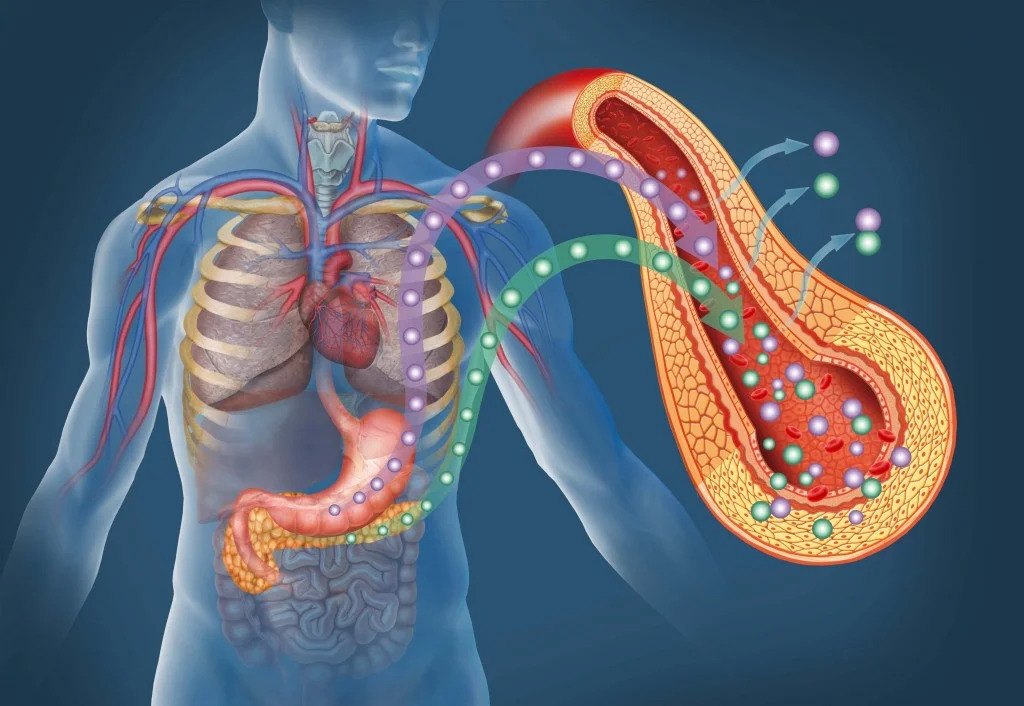Diabetes mellitus is a group of metabolic disorders characterized by chronic hyperglycemia resulting from defects in insulin secretion, insulin action, or both. This condition leads to serious complications affecting various organs and systems within the body.

Types of Diabetes Mellitus
Type 1 Diabetes
Type 1 diabetes is an autoimmune disorder where the body’s immune system attacks and destroys insulin-producing beta cells in the pancreas. This results in an absolute deficiency of insulin. It commonly manifests in children and young adults, though it can occur at any age.
Type 2 Diabetes
Type 2 diabetes is characterized by insulin resistance and a relative insulin deficiency. It is the most prevalent form of diabetes, accounting for approximately 90% of all cases. Risk factors include obesity, sedentary lifestyle, poor diet, and genetic predisposition.
Gestational Diabetes
Gestational diabetes occurs during pregnancy when the body cannot produce enough insulin to meet the increased demands. While it often resolves after childbirth, it increases the risk of developing type 2 diabetes later in life.
Other Specific Types
Other forms include monogenic diabetes syndromes, diseases of the exocrine pancreas, and drug- or chemical-induced diabetes.
Causes and Risk Factors
The etiology of diabetes varies by type:
- Type 1 Diabetes: Genetic susceptibility combined with environmental factors, such as viral infections, may trigger the autoimmune response.
- Type 2 Diabetes: A combination of genetic and lifestyle factors, including obesity, physical inactivity, and poor dietary habits, contribute to its development.
- Gestational Diabetes: Hormonal changes during pregnancy, along with genetic and lifestyle factors, play a role.
Symptoms
Common symptoms across all types of diabetes include:
- Polyuria (frequent urination)
- Polydipsia (increased thirst)
- Polyphagia (increased hunger)
- Unintended weight loss
- Fatigue
- Blurred vision
- Slow-healing wounds
Diagnosis
Diagnosis is established through various tests:
- Fasting Plasma Glucose (FPG): Measures blood glucose after an overnight fast. A level of 126 mg/dL (7.0 mmol/L) or higher indicates diabetes.
- Oral Glucose Tolerance Test (OGTT): Assesses blood glucose before and two hours after consuming a glucose-rich beverage. A two-hour blood glucose level of 200 mg/dL (11.1 mmol/L) or higher confirms diabetes.
- Glycated Hemoglobin (HbA1c): Reflects average blood glucose levels over the past two to three months. An HbA1c level of 6.5% (48 mmol/mol) or higher is diagnostic of diabetes.
Treatment and Management
Management strategies depend on the type of diabetes:
- Type 1 Diabetes: Requires lifelong insulin therapy, administered through injections or an insulin pump. Monitoring blood glucose levels, adhering to a balanced diet, and regular physical activity are essential.
- Type 2 Diabetes: Initial management includes lifestyle modifications such as weight loss, healthy eating, and increased physical activity. Oral medications or non-insulin injectables may be prescribed, and insulin therapy might be necessary as the disease progresses.
- Gestational Diabetes: Focuses on blood glucose monitoring, dietary adjustments, and physical activity. Insulin may be required if target glucose levels are not achieved.
Complications
Chronic hyperglycemia can lead to complications affecting various organs:
- Cardiovascular Disease: Increased risk of heart attack and stroke.
- Neuropathy: Nerve damage leading to numbness and pain, typically in the extremities.
- Nephropathy: Kidney damage that can progress to renal failure.
- Retinopathy: Eye damage increasing the risk of blindness.
- Foot Damage: Poor circulation and nerve damage raise the risk of foot ulcers and infections, potentially leading to amputation.
Prevention
While type 1 diabetes cannot be prevented, the risk of developing type 2 diabetes can be reduced through:
- Healthy Eating: Emphasizing fruits, vegetables, whole grains, and lean proteins.
- Regular Physical Activity: Engaging in at least 150 minutes of moderate aerobic exercise per week.
- Weight Management: Maintaining a healthy weight to improve insulin sensitivity.
- Regular Screening: Especially for individuals with risk factors such as obesity, family history, or belonging to high-risk ethnic groups.
MYHEALTHMAG